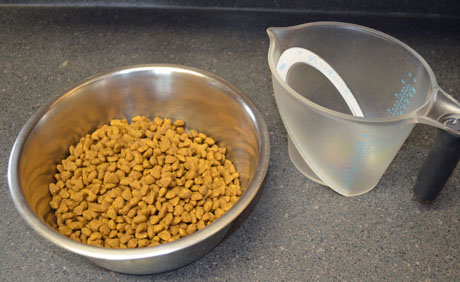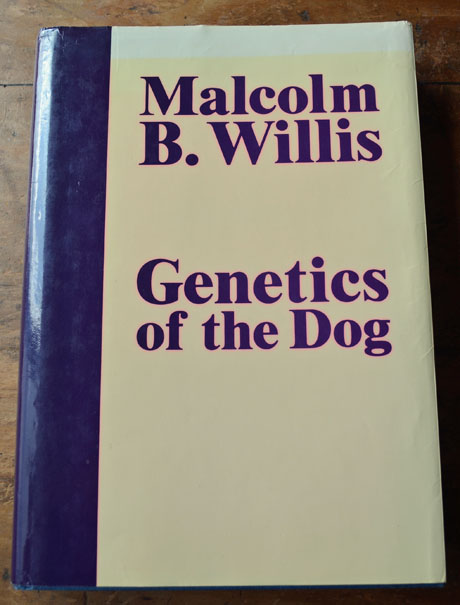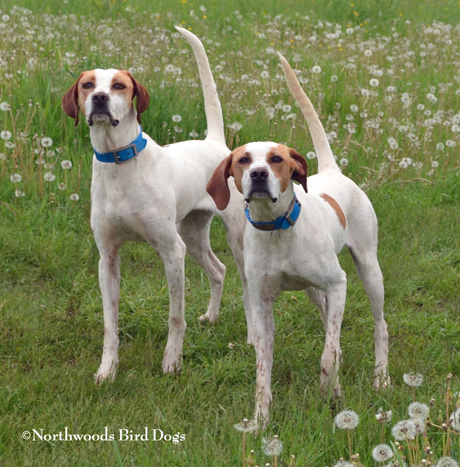Good stuff about puppies

- A pointing dog’s first hunting season!
- Bird and gun introduction
- Early development of puppies
- How to correct a dog
- How to pet a dog
- How to pick a puppy
- Patience and puppies
- Picking puppies: the unimportance of picking order
- Puppies and fireworks
- Puppy buying mistakes
- Raising puppies at Northwoods Bird Dogs
- The pointing instinct
- Training puppies on a stakeout chain
Good stuff from previous posts
Finer points on…
- A brace of bird dogs
- Accuracy of location
- Bird finding
- How to flush grouse and woodcock
- Hunting pattern
- Range
- Running grouse
- Scenting ability
- Speed and scenting
- To point a bird, first a dog has to find it
- Trust your dog
- Using grouse dogs on pheasants
Training
- A bump or a knock
- Backing point
- Bird dog basics: hunt, handle, point birds
- Bumping grouse
- Electronic training collars…a little perspective
- How to correct a dog
- How to pet a dog
- Patience and puppies
- The pointing instinct
- Transition to wild birds
- Unproductive points
- WHOA and NO
Breeding
- Dogs, not averages, matter in breeding
- Evaluating litters
- Pointers of Northwoods Bird Dogs
- Proper conformation
- The tail of a bird dog
Health
How to maintain a good weight for your dog

Dog food gets delivered to us by the pallet. When the kennel is humming, we go through about one bag every two days. We feed Pro Plan Sport All Life Stages Performance 30/20 to almost all dogs–whether young, old, dogs in for training, puppies or nursing dams.
It’s always disheartening when dogs come in for training and they’re overweight. Among other issues, they lack stamina and concentration and we immediately begin feeding them the proper amount to get them in shape. Just like people, dogs are what they eat and nutrition is key.
Betsy and I recently came across excellent information on the Purina Pro Club website about feeding and keeping dogs at a good weight and we want to share it.
Question answered by Purina Research Scientist Dottie Laflamme.
Question: How important is it to feed dogs on an individual basis versus simply feeding the amount of food suggested on the back of the package?
Answer: The feeding guidelines on a bag or can of food are suggested amounts to feed based on the average energy requirements of dogs. However, many dogs may need more or less than the amount suggested. If your dog is not very active, you might start with less food. If your dog is highly active, you could start with more food.
If you are starting a food for the first time and your dog seems “average,” you should use the guidelines to help you know how much to feed. Of course, if you are feeding other foods as well, such as treats, you should feed less. You should monitor your dog’s weight, then increase or decrease the amount of food offered to attain and maintain a lean body mass in your dog. If you do not have access to a scale, you can monitor changes by using a measuring tape to measure and record the circumference of your dog’s waist (just behind the ribs) and chest (just behind the elbows). These measures reflect body fat and will increase or decrease over time with weight changes.

We feed at about the same time every day. And we always measure!
Keeping Canine Athletes at a Healthy Weight
To perform their best, hardworking dogs must maintain an ideal body condition. Training activities, your dog’s metabolism and nutrition contribute to his body condition. It can be a challenge to keep weight on some canine athletes because regular exercise not only increases the calories an active dog burns, it also increases overall metabolism. Just like people, some dogs naturally have a higher metabolism.
“A dog that is losing weight, particularly muscle mass, is in a catabolic state and may be more susceptible to injury, illness or slower recovery,” says Purina Nutrition Scientist Brian Zanghi, Ph.D.
Intense training coupled with suboptimal nutrition, especially insufficient intake of protein, can cause a catabolic state. Since protein nourishes muscles, underweight canine athletes that do not receive adequate dietary protein may suffer from fatigue and inadequate recovery, which ultimately may impact their performance.
“If a dog is underweight, feeding a nutrient-dense food may help him in achieving a stable body weight and an ideal body condition,” Zanghi says. “If a dog seems fulfilled with his normal daily feeding portion, but still is underweight, feeding a food that is more nutrient-dense may help the dog ingest more calories with a smaller portion size.” This will help the dog get the calories needed before feeling full.
Dog food formulas that contain higher proportions of fat are more nutrient and calorie dense. Performance formulas with 28 to 30 percent protein and 18 to 20 percent fat will deliver more concentrated nutrition compared to maintenance formulas with 22 to 26 percent protein and 12 to 16 percent fat. For example, Purina® Pro Plan® SPORT Performance 30/20 Formula contains 30-percent protein and 20-percent fat to help fuel a dog’s metabolic needs and maintain lean muscle. It has omega-3 fatty acids from fish oil for healthy skin and coat and glucosamine to help support joint health and mobility.
“More important than enriched calorie content, the higher proportion of dietary fat in a performance formula helps ‘prime’ your dog’s muscles to better adapt to exercise and endurance,” says Zanghi.
Sometimes dogs that are underweight are not motivated by food, so it can be harder to get them to eat. Adding water or Purina Veterinary Diets® FortiFlora® as a palate enhancer to the dog’s food can stimulate a greater desire to eat, particularly when traveling or boarded in a kennel.
If a dog is routinely eating twice a day, it may be helpful to switch to once a day, such as after the dog is done exercising or training for the day. His post-workout appetite may improve his ingestion volume. You also should consider whether the dominant behavior of other dogs in the home or kennel may prevent access to food and thus contribute to a dog’s underweight condition. Feeding dogs in separate locations may correct the problem.
Evaluating Your Dog
When it comes to assessing your dog’s body condition, you need to know more than just a number on a scale.
“A dog’s scale body weight tells us nothing about the amount of body fat relative to muscle mass,” Zanghi explains.
By noting some simple features of your dog’s body, you can make a general assessment of his body condition and monitor his body fat. Dogs that are overweight are more susceptible to joint-related health concerns as added weight places extra stress on the joints of an active dog.
Purina veterinary nutritionists developed the nine-point Purina Body Condition System.
Typically, dogs with an ideal body condition of 4 or 5 score should have:
• An obvious waist behind the ribs when viewed from above
• A tuck in the belly when viewed from the side
• Ribs that are easily felt but not seen
To determine your dog’s body condition score, examine his physique by putting your hands on the dog and feeling his ribs. Place both thumbs on the dog’s backbone and spread your hands across the rib cage. You should be able to easily feel the ribs. You also should be able to view the dog’s waist behind the ribs, and an abdominal tuck should be apparent from the side. This is a convenient way to monitor your dog throughout the seasons to know if you should be adjusting your dog’s daily food portion to meet his caloric needs.
Monitoring your dog’s body condition and feeding a high-quality, nutrient-dense food will help ensure your canine athlete is performing at his best.
What we’re reading: Genetics of the Dog

Breeding animals, regardless of the breeder’s effort and knowledge, still involves randomness and luck. There is a very good reason that breeding is called an art and not a science. A good breeder can do many things to reduce the “luck” part. And understanding basic genetic principles, possibilities and probabilities is the place to start.
Genetics of the Dog by Malcom B. Willis is a classic text on canine heredity. Most genetic aspects are included—color, reproductive, conformation, eyes, behavior and skin. Special chapters on hip dysplasia and other defects are included. The chapters on polygenetic inheritance and selection methods, inbreeding and other breeding systems contain excellent, detailed information for breeders.
Willis writes that a person can’t predict the breeding worth of a given dog by just looking at it or seeing it in the field. What the dog displays physically is only an indication of what it may produce and the only way to find out is to breed it and evaluate its offspring.
Still, good breeding involves a lot of common sense and hard-earned knowledge. Willis gives us some of each in this book.
If all you know about a pedigree is the names within it then that pedigree is effectively useless as a guide to breeding worth.
…one needs to breed from those dogs which are outstanding even if they may have some particular obvious failing. Dogs which have very little wrong with them, but also very little outstanding either, are not the ones to choose.
All sires will produce inferior stock and it is the overall average that matters together with the proportion of progeny in the upper areas.
….success (in dog breeding) is not about producing a few winners – even a few champions – but rather it is about producing a generally high standard of stock.
Finally, Willis sums it up:
Clearly chance plays a part but, a breeder can, by careful selection of breeding stock and subsequent planning of their mating, increase his prospects of obtaining what he seeks. The better he is at selecting, the better his knowledge of specific genetic factors, then the greater his chances of success.




